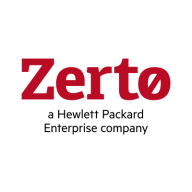


Zerto and NetApp Cloud Insights compete in the IT solutions category, focusing on disaster recovery and cloud infrastructure management, respectively. Based on feature offerings, Zerto stands out more in disaster recovery capabilities.
Features: Zerto's notable features include disaster recovery with near-synchronous replication, real-time data replication, and automated failover. It provides a robust DR strategy by protecting virtual environments with minimal manual intervention. In contrast, NetApp Cloud Insights offers detailed infrastructure analytics with strong visibility across hybrid clouds, focusing on monitoring and resource optimization, especially for NetApp storage systems. Its advanced analytics and ability to manage multivendor environments make it a comprehensive tool for cloud infrastructure insight.
Room for Improvement: Zerto users have expressed a need for improved file-level recovery, better API integrations, and enhanced automation in failover processes. Simplifying the user interface is also on users' wish lists. On the other hand, NetApp Cloud Insights could improve its licensing models and make report generation more intuitive, alongside simplifying integration across various platforms.
Ease of Deployment and Customer Service: Zerto is praised for its straightforward setup in both on-premises and hybrid environments, with users highlighting the ease of management throughout daily operations. NetApp Cloud Insights, being cloud-based, integrates seamlessly into existing infrastructure, allowing users to deploy with minimal disruption, though some installation and configuration expertise may be required.
Pricing and ROI: Pricing details for Zerto and NetApp Cloud Insights vary based on configurations and services required. Zerto's disaster recovery solution may offer higher ROI through reduced downtime and productivity loss. NetApp Cloud Insights, focused on resource optimization, could result in cost savings across multivendor environments, though its pricing model could benefit from simplification.



IBM Turbonomic offers automation, planning, and right-sizing recommendations to streamline resource management, improve efficiencies, and optimize costs across virtualized environments and cloud platforms.
IBM Turbonomic is valued for its capability to optimize resource allocation and monitor virtual environments efficiently. It facilitates automated decision-making in VM sizing, load balancing, and cost optimization for both on-premises and cloud deployments. Users can leverage insights for workload placement, ensure peak performance assurance, and effectively right-size across VMware and Azure. The ongoing transition to HTML5 aims to improve visual and navigational ease, while expanded reporting features are anticipated. Opportunities for improved training, documentation, and integrations enhance platform usability and functionality.
What Are the Key Features?In finance, IBM Turbonomic aids in maintaining platform efficiency during market fluctuations. Healthcare organizations leverage its capability for resource optimization during high-demand periods to enhance patient care support. Retailers use it for planning in peak seasons, ensuring resources align with fluctuating demand to maintain performance continuity.
NetApp Cloud Insights is an infrastructure monitoring tool that gives you visibility into your complete infrastructure. With Cloud Insights, you can monitor, troubleshoot and optimize all your resources including your public clouds and your private data centers.
Zerto is used for disaster recovery, business continuity, data migration, and ransomware recovery, providing continuous data protection and near real-time replication. Valued for ease of use, efficient failover processes, and versatile integration, it enhances organizational efficiency, reduces errors, and boosts productivity.
We monitor all Cloud Migration reviews to prevent fraudulent reviews and keep review quality high. We do not post reviews by company employees or direct competitors. We validate each review for authenticity via cross-reference with LinkedIn, and personal follow-up with the reviewer when necessary.